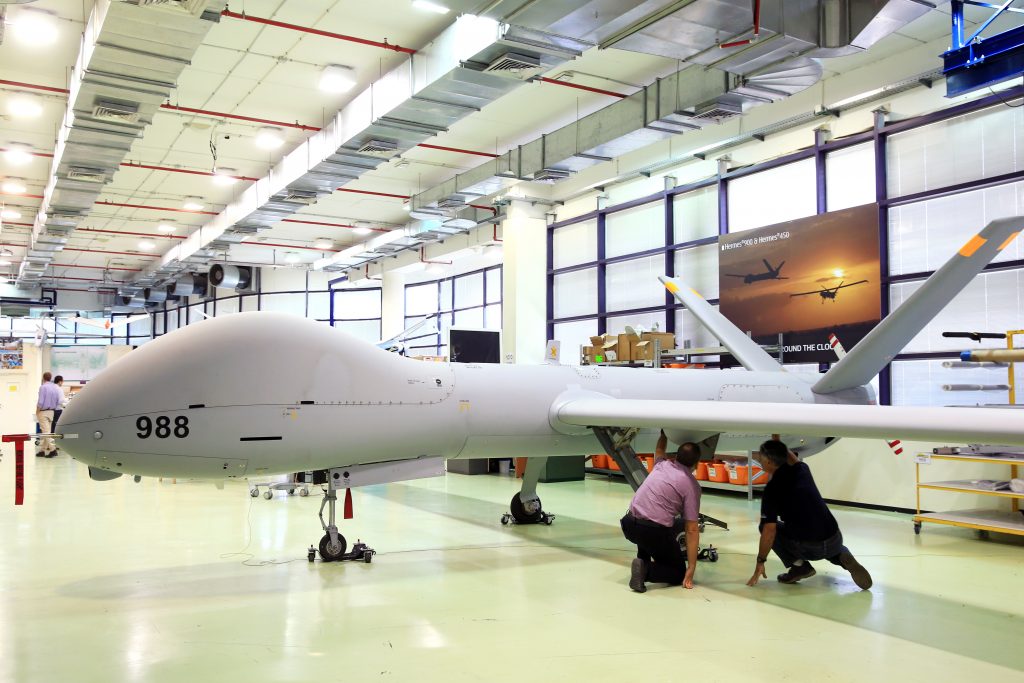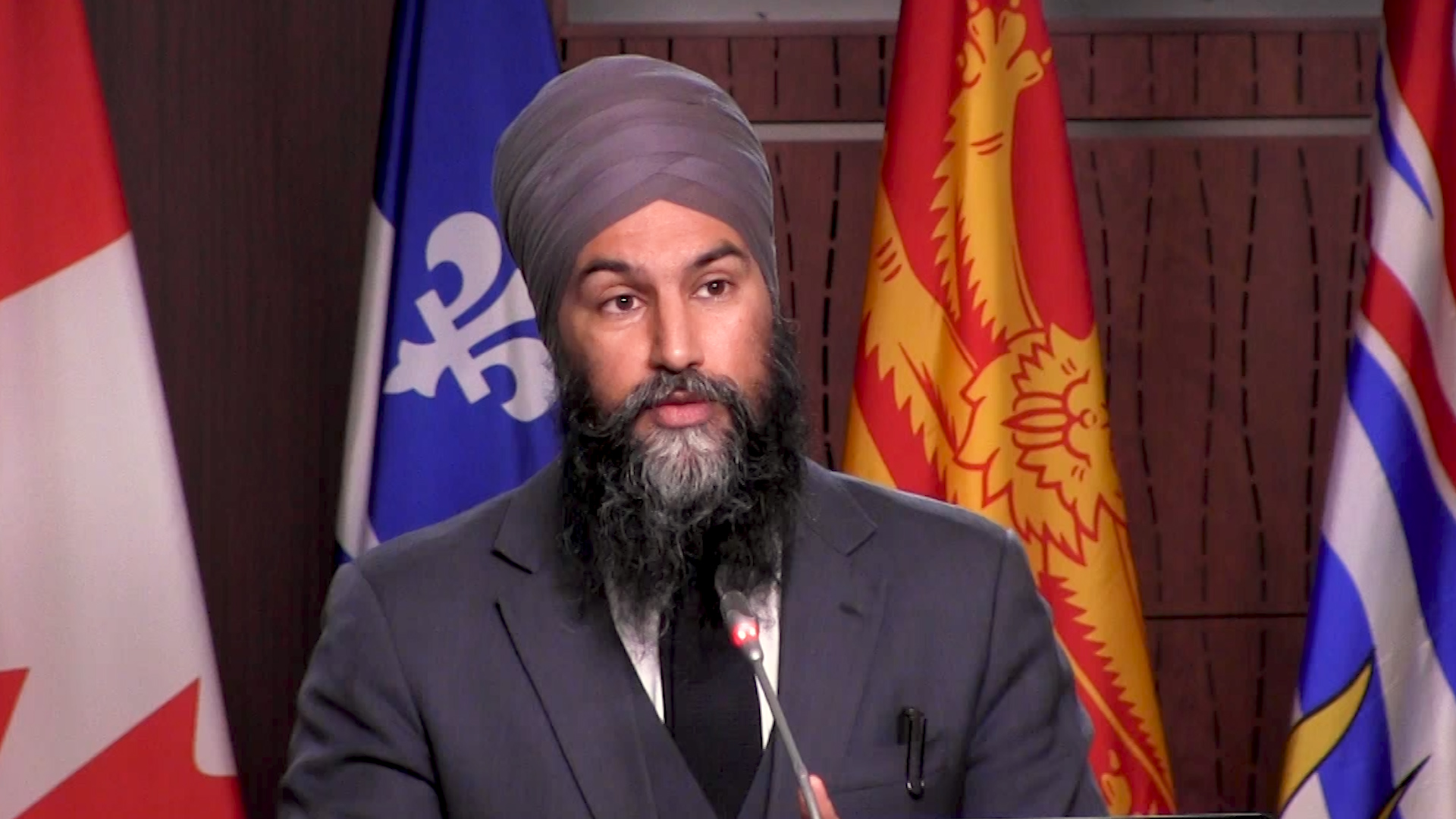- Reaction score
- 26,404
- Points
- 1,360
dapaterson said:Well, since the last smart RCAF officer left C Prog...
It's up to PSPC and TB to decide?

dapaterson said:Well, since the last smart RCAF officer left C Prog...
Retired AF Guy said:Not sure if this has been previously or in another thread. If it has my apologies. Back on 01 May 2019 the Canadian government issued its "Invitation to Qualify for the Procurement Process for the Remotely Piloted Aircraft System (RPAS) Project." The document can be found here.
A couple interesting facts are contained in the document:
...........
CloudCover said:Wikipedia now lists the General Atomics MQ-9 Reaper, designated CU-163 is in Canadian service: https://en.wikipedia.org/wiki/Royal_Canadian_Air_Force#Rotary_wing
I believe this is incorrect data. Anybody here a wikipedia editor?
Germany walks away from $2.5 billion purchase of US Navy’s Triton spy drones
The German government has canceled plans to buy Northrop Grumman-made Triton drones to the tune of $2.5 billion, opting instead for manned planes carrying eavesdropping sensors.
The decision to buy Bombardier Global 6000 aircraft comes after officials became convinced that the Global Hawk derivatives would be unable to meet the safety standards needed for flying through European airspace by 2025, a target date for Berlin’s NATO obligations [emphasis added].
A defense ministry spokeswoman told Defense News the Triton option had grown “significantly more expensive” compared with earlier planning assumptions.
The U.S. State Department in April 2018 cleared Germany’s request to purchase four MQ-4C Triton drones for signals intelligence missions under the country’s PEGASUS program, short for “Persistent German Airborne Surveillance System.” The program includes a sensor, dubbed “ISIS-ZB” and made by Hensoldt, for intercepting communications and locating targets by their electromagnetic signature.
The German Defence Ministry for years had been banking on the Triton purchase to come with a pre-installed safety-technology package that would be easily approved by European air traffic authorities. But officials saw their hopes dashed as Italy recently issued a military-type certificate for a sister drone — NATO’s Alliance Ground Surveillance fleet of Global Hawks, stationed in Sigonella, Sicily — that prescribes tight restrictions on flights over the continent.
Manned aircraft like the envisioned Global 6000 are allowed to routinely fly alongside civilian traffic, a prospect that the Germans see as more palatable than dealing with drone-specific airspace corridors.
Berlin hopes to catch the tail end of Bombardier’s Global 6000 manufacturing run, as the model is being phased out in favor of an upgrade. While that strategy could yield a better price, Berlin needs to move soon before the production line goes cold [emphasis added], according to officials...
https://www.defensenews.com/breaking-news/2020/01/28/germany-walks-away-from-25-billion-purchase-of-us-navys-triton-spy-drones/
Elbit Systems has added a life-saving capability to the maritime patrol version of its Hermes 900, equipping the unmanned air vehicle (UAV) with four six-person life rafts that can be dropped to survivors.
The Israeli company has delivered an example to an undisclosed customer in South-East Asia, and believes the latest feature could give its UAV an edge over manned aircraft in search and rescue contests, including the UK%u2019s upcoming SAR-2G %u2013 or second generation %u2013 requirement.
%u201CAdverse weather and short endurance significantly degrade the SAR capabilities of manned aircraft, often preventing them from executing their life-saving missions,%u201D says the manufacturer. However, the Hermes 900 can fly continuously for more than 24h in %u201Cadverse conditions day and night%u201D.
Elbit says the aircraft%u2019s onboard radar and electro-optical/infrared sensor can visually identify survivors and calculate the best drop-point, enabling the rafts to be dispatched from as low as 600ft to a point a safe distance from those in the sea.
LoboCanada said:Elbit adds life-saving capability to Hermes 900
I suspect it can fly 24 hours OR carry the pod, but not both.Dimsum said:There is no way the Hermes 900 is flying 24h with a pod like that.
Canada buys Israeli drone for Arctic maritime surveillance
Ottawa will shell out more than $36 million to purchase an advanced Israeli drone to help the federal government keep an eye on the growing maritime activity in Canada’s Arctic, federal officials announced Monday [Dec. 21].
In a joint statement, Minister of Public Services and Procurement Anita Anand and Transport Minister Marc Garneau, said the contract with Elbit Systems Ltd. for the acquisition of a Hermes 900 StarLiner remotely piloted aircraft system (RPAS) was awarded through an “open, transparent and competitive procurement process.”
The federal government has also engaged in consultations with Indigenous groups in Canada’s North, where the drone will operate, officials said.
The Hermes 900 StarLiner, a civilian version of Elbit’s medium-altitude long-endurance military drones, will join Transport Canada National Aerial Surveillance Program aircraft fleet [see: https://tc.canada.ca/en/programs/national-aerial-surveillance-program ]. It is expected to be delivered by December 2022.
According to federal officials, the Hermes 900 StarLiner is capable of operations of up to 72 degrees north latitude and has a range of more than 1,400 nautical miles. It comes equipped with back-up command and control and navigation systems, electrical optical infrared camera, synthetic aperture radar and mapping camera system.
The drone is controlled from a remote location and also includes autopilot capabilities, such as automatic takeoff and landing.
Transport Canada plans to use it to detect oil spills, survey ice and marine habitats, and monitor activity on the ocean in Canada’s Arctic, officials said.
The aircraft is fully certified to operate in civilian airspace, and will take-off and land in civilian airfields.
In addition to the drone itself, the $36.16‑million contract includes communication links, ground control stations, sensor packages, training and the optional purchase of spare parts.
“Canada is committed to protecting our endangered species and our marine environment,” Garneau said in a statement.
Integrating remotely piloted aircraft into Transport Canada’s fleet will make federal surveillance operations more robust than ever, he added.
“The National Aerial Surveillance Program also helps with search and rescue, humanitarian efforts, illegal fishing enforcement, and the development and regulation of Canada’s drone industry,” Garneau said.
Limited options for maritime surveillance drones
Experts welcomed the announcement.
Timothy Choi, a maritime strategy expert and Fellow of the Canadian Global Affairs Institute, said the federal government was facing a limited choice when it went shopping for this new capability.
“Large maritime surveillance drones – that is, ones equipped with downward-looking radar and AIS receivers to detect shipping – have not been as prevalent in the global drone market as their land-centric counterparts,” Choi said. “Of these, there are even fewer that have been tested in Arctic conditions.”
The model that Canada is acquiring has, however, been undergoing operational trials in Iceland via the European Maritime Safety Agency ever since summer 2019, Choi said.
In September 2020, the same model was also selected for demonstration for the UK’s coast guard.
The Hermes 900 StarLiner is also significantly cheaper than the used Euro Hawk drone Canada tried to buy from Germany last year, Choi said.
“Operationally, the new drone will greatly help ‘connect the dots’ when it comes to surveilling Arctic waters and enforcing Canadian regulations,” Choi said.
“While our RadarSat satellites can and do detect oil spills, their brief visits over the Arctic make it difficult to identify the exact nature of the oil spill or its origins: the ability of a drone to loiter for long periods of time with higher-resolution sensors will help fill this gap.”
Those same sensors, which are required to be able to discern details as minute as fishing nets on ships, will collect valuable evidence to document any activities such as illegal dumping and fishing, Choi said.

Employees check an Elbit Systems Ltd. Hermes 900 unmanned aerial vehicle (UAV) at the company’s drone factory in Rehovot, Israel, June 28, 2018. (Orel Cohen/REUTERS)
https://www.rcinet.ca/eye-on-the-arctic/2020/12/22/canada-buys-israeli-drone-for-arctic-maritime-surveillance/
MarkOttawa said:Transport Canada gets its own drone before RCAF's never never program does:
Dimsum said:Yes, but for a different mission and without a lot of the RCAF's requirements (armament, international operations, classified networks, interoperability with other services/nations, etc). So it's kind of like judging apples to oranges.
I'd like to know where they want to deploy them from. I'd assume that Yellowknife and Iqaluit, maybe also Whitehorse, would be the main areas. Also, is 1400nm one-way or "combat radius"? It makes more sense to judge RPAS based on endurance rather than range, because theoretically with the right SATCOM network, the range is unlimited - fuel and SATCOM connectivity at the poles is the issue.
Finally, it says it can operate up to 72N, which is just beyond the NW Passage. What SATCOM system are they using to guarantee that connectivity? How about the tons of land/water north of that?
To be clear - I am not bashing this. It's awesome that TC is getting another tool in the toolbox, but I'd caution that there are still lots to work out (especially how to regulate RPAS in domestic and international airspace) before it actually gets operational.
“Transport Canada’s National Aerial Surveillance Program is an essential piece of the Government of Canada’s efforts to keep Canada’s coasts and inland waters safe and clean,” said Anita Anand, Minister of Public Services and Procurement.“This investment will help to enhance the security and surveillance capacity under the program, leading to a cleaner and safer environment.”
The Hermes 900 StarLiner RPAS is expected to be delivered by December 2022. This aircraft system is controlled from a remote location and has autopilot capabilities for automatic takeoff and landing. The RPAS has a flying range of more than 1,400 nautical miles with the capability of operating beyond the visual line of sight and capable of operations to 72 degrees north latitude. This will help to detect oil spills, survey ice and marine habitats, and monitor activity on the ocean in Canada’s Arctic.

“We have not finalized the basing locations, but there certainly will be a centralized ground control node in Ottawa,” Meinzinger said.
“And we will have an east and a west maintenance detachment where we will locate vehicles, air vehicles and launch and recovery teams. And then we'll have one northern base, which will be used when it's necessary to be used.”
The entire drone force will comprise about 300 service members, he added, with technicians, pilots and others drawn from the air force and other parts of the military. The exact make-up of that force, and even how many drones will purchased, remains a work in progress.


According to Wikipedia the Heron had COMINT stuff in it, so maybe it’s advantageous to have it near a COMINT unit?Is there an operational logic for controlling them from Ottawa? I would think an actual operational location would make more sense.
The US operates UAVs from Vegas. As long as you're in satellite range, physical location is irrelevant from a purely physical perspective.Is there an operational logic for controlling them from Ottawa? I would think an actual operational location would make more sense.
Close to the decision-makers.Is there an operational logic for controlling them from Ottawa? I would think an actual operational location would make more sense.
